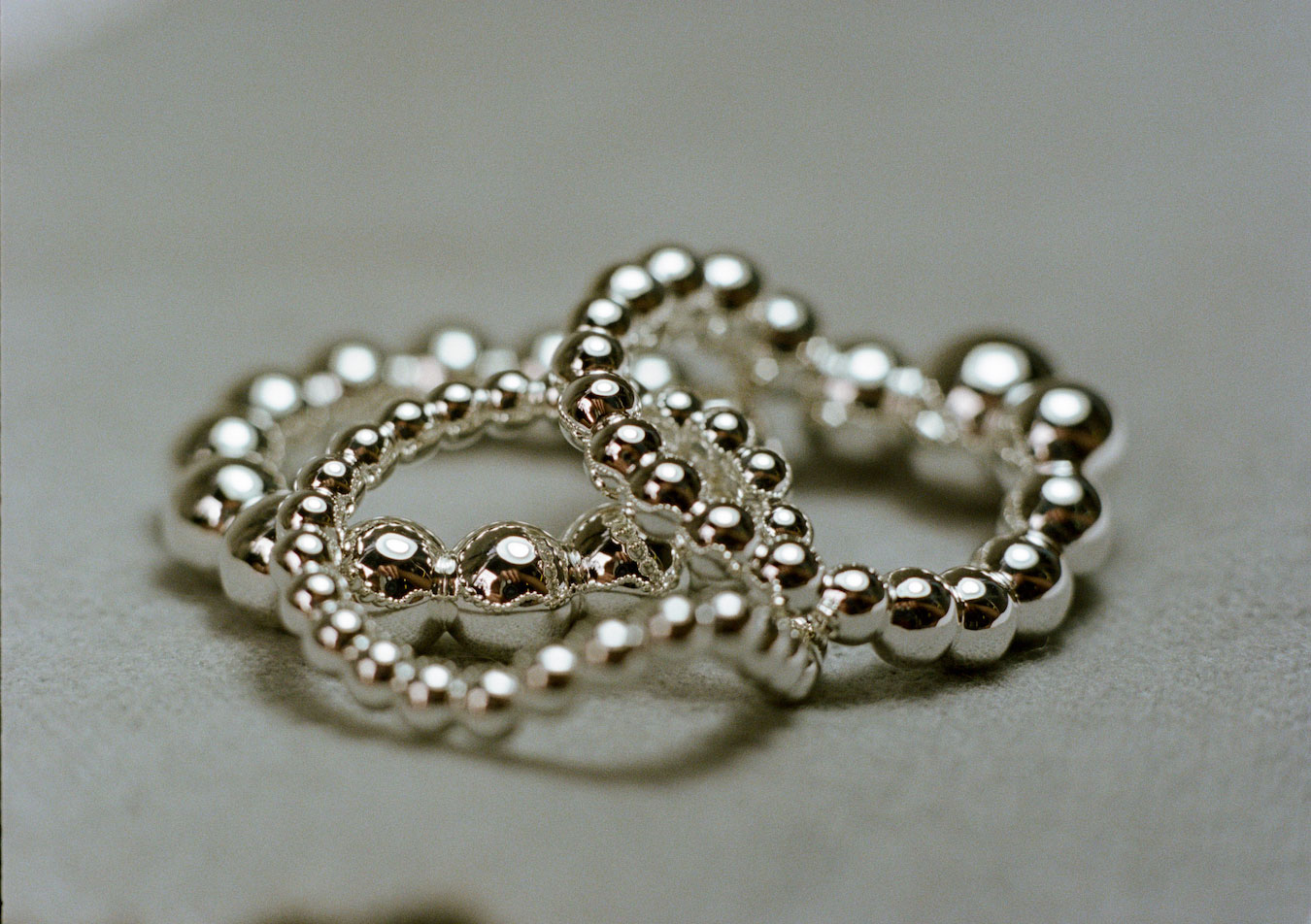
Your questions answered. We've put together a guide on the types of metals we offer to help you decide on your forever piece.
What is a carat?
A carat is defined as 1/24 parts pure gold, which means that 24-carat gold is considered pure gold. For example, 18ct gold consists of 18 parts pure gold and 6 parts alloy. An alloy is the mixture of a precious metal with another metal to improve its overall properties. In jewellery, this allows us to change the hardness and colour of a metal.
What types of metal does Meadowlark offer?
We offer our main collections in sterling silver, 9ct yellow gold and 23k gold plate. Our Ceremonial pieces are available in 9ct, 14ct and 18ct yellow and white gold, or platinum.
How do I know which metal is right for me?
It depends on how often you intend to wear your piece eg. daily or for special occasions. Whilst sterling silver and 23k gold plate are great alternatives for solid gold, they do not wear as well as solid gold – for example, we always recommend rings in 9ct solid gold over 23k gold plate due to the wear and tear rings endure day to day.
For engagement rings, it all comes down to budget and colour preference, the most durable options are platinum and 18ct gold.
What does gold plated mean and how do I care for it?
Our gold plated pieces have a thin layer of 23 carat yellow gold on top of sterling silver. It is important to note, this will eventually wear off over time. So, to make it last it is best to treat them as a sometimes piece, rather than an everyday one. We recommend removing jewellery before washing hands, showering & swimming, and avoiding soaps & chemicals (such as nail polish removers, perfume, hairspray) and harsh cleaning products which can accelerate the wear of gold plate.
To clean them, use a mild dishwashing liquid diluted in water. If your jewellery does become in need of replating please contact us for a quote.

Why is sterling silver not recommended for engagement rings?
Naturally, pure sterling silver is soft and malleable and in order to increase its durability and hardness, alloys (a mixture of metals such as zinc or copper) are added. However, due to the presence of alloys in sterling silver, it is prone to tarnishing over time which in addition to its softness, makes it unsuitable to use with expensive gemstone settings. This is why we use gold or platinum for our Ceremonial pieces as these metals have more hardness and durability.
What is the difference between 9ct, 14ct, 18ct gold and platinum?
For 9ct and 14ct white gold, there is a slight yellow tone, whilst 18ct white gold tends to be more graphite in colour. Traditionally white gold is rhodium plated to give a bright shiny white colour, we like the natural metal tones, so we only plate on request.
Please note if you decide to rhodium plate your ring, you will need to have it replated every 1-2 years as it wears off over time.
Physically, the higher the carat, the higher the gold content eg. 9ct gold is 37.5% pure gold (the rest is alloys), 14ct is 58.5% and 18ct is 75% pure gold. In terms of strength and durability, we recommend choosing 18ct gold or platinum.





